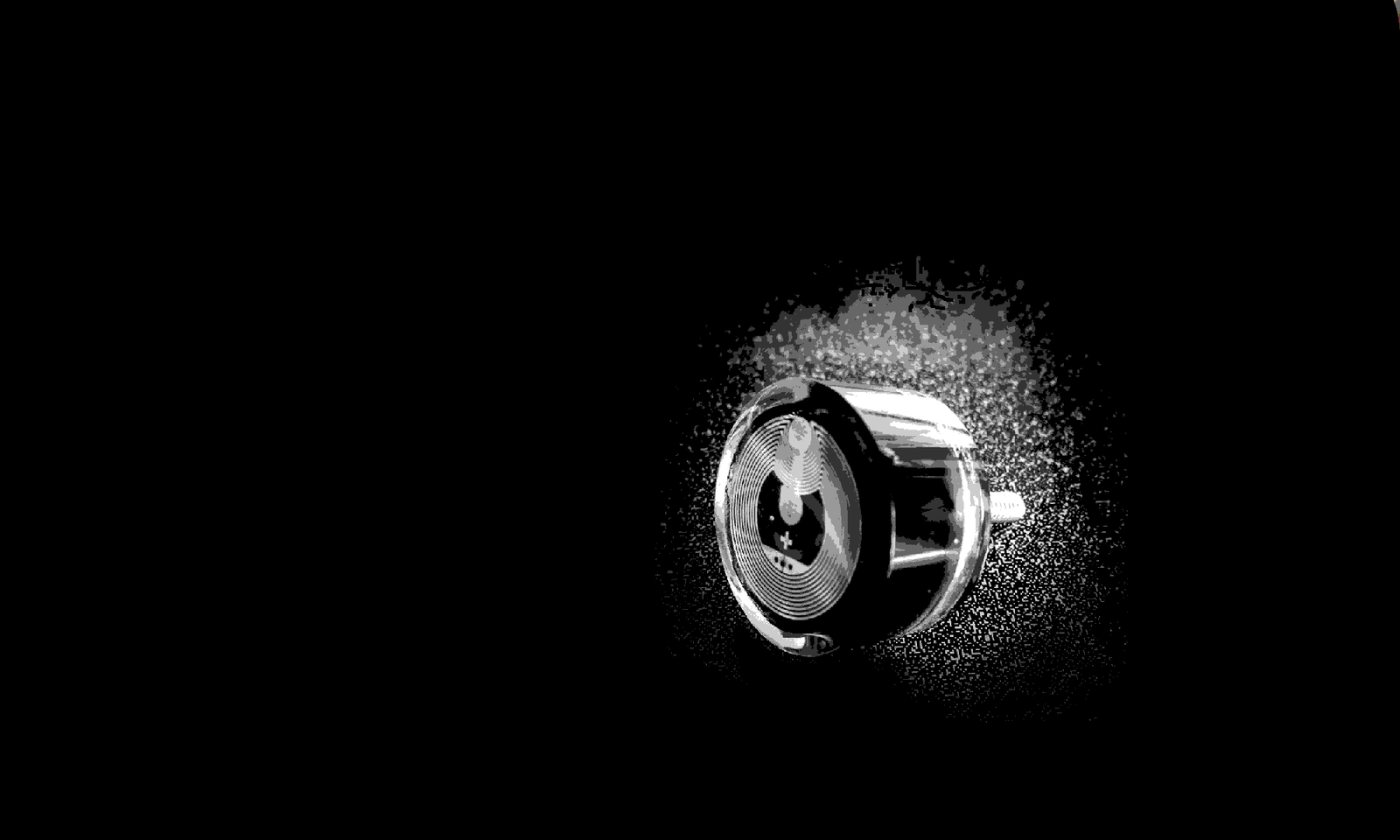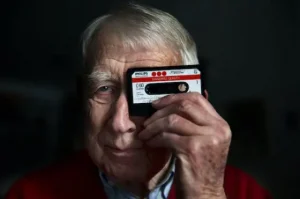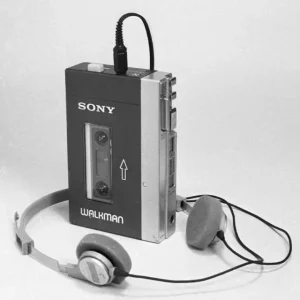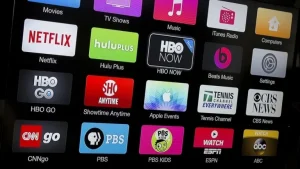Guarding the Gates of Hell

EUROPay – MasterCard – VISA
“the global mobile financial payment cartel controlling every bank issuing credit and debit cards”
What have we done to ourselves?

Designers and Builders of new or existing things transformed into interactive wireless communication nodes by means of Near Field Communication (NFC).
Near Field Communication

What have we done to ourselves?
Are the chipped credit cards we’ve been compelled to use secure? Yes.
Is the article “FAKE NEWS” linked below a crock of shit? Yes. The article falsely states the chips in our credit cards –EMIT– data. The article is a con job attempting to mislead people into buying RFID “blockers.” The article’s “warning” is a specious lie of omission.
A specious statement is one that uses the truth to tell a lie of omission. Can the data stored on the chip of our credit cards be read? Yes. There is data stored in the chip. Does the readable data stored on the chip identify us personally? No.
Does the chip itself –emit– the data as the article falsely claims? No that is the lie of omission.
The chip in our credit cards is a “passive” RFID chip. It has no power of its own. It does not –emit– anything. A powered reader like a point of sale card reader or a cellphone powers the passive chip set by means of a magnetic field eminated by the powered device which can then read the data that is more appropriately explained as “pull.”
If you are standing around and somebody holds a cellphone within 1″ of your buttocks where so many keep their cellphone in their back pocket a cellphone or large bulky portable card reader can be used to (((tap)))® on your heinie and any data stored in the chip set’s memory can be read.
Just as an aside I must ask “What would –you– do if somebody tapped you on your ass with a cellphone?

The contactless cards and anything being manufactured that a cellphone can (((tap)))® can only be powered and read from a distance of ~1″. They use a wireless network protocol called Near Field Communication (NFC) and “near” means “near.”
Furthermore, “What data can actually be read anyway?”
In the context of financial payment cards all that can be read from the chip in our credit cards is a token. Think of a token as a unique arbitrary alphanumeric nickname for your actual account. Who is a67c445x89?
Nobody knows who a67c445x89 is except your bank which receives that token (nickname) sent over the cellular network and uses it to look up the real you. Furthermore, each time the token is accessed for use it is changed.
Anything that uses NFC for financial transactions is very secure. Only an idiot would believe the global mobile financial payment cartel would implement an insecure means of transacting contactless financial payments.
Your credit card account cannot be hijacked by surfers standing near you and reading your account data as these fake articles claim or otherwise infer or imply.
You do not need to buy “blockers” unless of course you have no problem wasting money to buy false peace of mind.

Like many of us, my love for music began as a young boy when I bought my first vinyl audio recording. Bob Dylan’s (1969) recording was one of my first.

Record albums were pressed in “vinyl” in those days, a material which nearly went extinct when other formats came along; formats which were less expensive to manufacture, less expensive to distribute and perhaps most importantly to be considered –more convenient– for people to buy and use.
Them rascally automobile manufacturers never figured out how to put a record turn table in a car so when we took our sweethearts to the drive-in we had to settle for eight track tape players.
I’ve heard it said Waylon Jennings gave Conway Twitty the nickname “Mr. Panty Dropper.” I’ve been playing guitar and trying to sing like Conway Twitty for decades but I’m telling you, back in the day they called boys like me hoods and we were way hipper than jocks because hoods knew the secret to hitting a home run with a girl was an Elvis tape.

The 8-track tape format had its day and tried to hold on for dear life. Capitalism and the ever present pursuit of the better mouse trap brought us the audio cassette tape format invented by Lou Ottens a Dutch audio engineer.

Not to be left behind the Japanese took the world by storm with the SONY Walkman® becoming a huge success as the way to playback audio cassette tapes as we roamed far and wide taking our music with us. I actually still have a Walkman and use it when occasionally taking walks to ponder my navel.


However, not unlike Little Miss Muffet who sat on her tuffet most musicians have been sitting on their asses and when the spider(s) came to sit down beside them the spiders took all the profits from them.
The spider was “streaming” an “access anytime and anywhere” distribution format by means of the Internet, the World Wide Web, and the “freemium” business model that not only disrupted CD it radically changed the quality of the audio consumers of music got indoctrinated into liking and it hasn’t changed.
If you want better audio quality you buy the CD. If you want the best audio quality you buy vinyl. If you want free or nearly free music you stream it.
People traded audio quality for convenience. Listening to music on a cellphone is not unlike going back in time and listening to music as if one were listening to AM radio with little teeny earphones on.
No tangible format like tape or plastic disks were needed anymore thank you very much; just pay a monthly streaming bill after the door swings shut on the free stuff.

Streaming media brought to all of us by convenience hacked our human behavior by exploiting our tendency to want something free. The freemium business model has proven to be a successful means of providing instant gratification.
Although vinyl recordings and other distribution formats remain in retail their sales have taken a big hit. After all, it is very difficult to compete with bits and bytes that are given away free as the means to lure customers to the download button.
That’s the reason the pusher man gives away the first hit of heroin; he knows it will get you hooked and you’ll be paying from then on.

Even the pusher man has competition and the streamers are vulnerable to better mouse traps. The mouse trap that is slowly and surely tripped to fall on the neck of streaming companies and many other unsuspecting mice is a technology 60% of Americans are using since it was brought to America in 2014: Near Field Communication (NFC.)
The ability to tap-and-pay with a cellphone has opened up a world of possibilities to those who asked “If I can tap-to-pay what else can I tap on?”
All that stands in the way is time and the understanding by song writers and musicians –creators– that the use of NFC can, will and is disrupting the streaming business model. NFC can and will put the power and financial rewards of what is created back into the hands of the creators themselves.
Clinton Gallagher has become an –NFC expert– that got started learning how to make it happen in 2016.
If you’re one of the aforementioned 60% of Americans (or an early adopter from another nation) that analysts reported as of Q4 2022 have begun using their cellphone and contactless credit/debit cards to (((tap)))® and pay you will understand the time has come to put NFC to use for you…you might even get the clues in this blog leading the way to make it happen for creators.
You’ve just read Clinton Gallagher’s explanation of the facts of life as they have become.
Follow up with this embedded video created by Rick Beato who explains why he thinks the record labels are no longer relevant to musician’s wanting to monetize the music they create…
This Discontinued Class taught by Clinton Gallagher, founder of tapABILITIES, LLC compliments of Michaels Art Supplies, Crafts and Framing, Brookfield, WI registered new students using this link to enroll.
The big boys controlling the global mobile financial payment cartel and their partners in government are sticking chips into and onto everything.
They started by chipping all of our credit and debit cards. Want to learn how little ol’ you can take advantage of the big finance boys who control credit and debit card transactions using the same technology?
Yes, the big boys stuck chips into all of our credit and debit cards which account for card purchasing volumes that have risen to more than 3 trillion dollars per annum and they had to avail themselves of some means to do so. So why can’t we avail ourselves of the same?
Well, we can, given the know-how, the starting cost can be as low as twenty-five cents. Yes, really. Pinky swear. Given the know-how you will learn WHEN YOU TAKE THE CLASS.
Historically, we have used our credit or debit cards to “swipe” the cards through a payment terminal. The big boys put chip sets into their bank cards so we consumers can now also stick or tap; stick the card into the payment terminal or (((tap)))® the card onto or near the payment terminal and voila! secure fincnaical transcations. Given that fact, every adult in America is now becoming aware of such change so it becomes reasonable to ask
“If I can now use a Smartphone or a contactless credit or debit card to tap-and-pay what else can I use the instantaneous convenience of tap for?.”
Clinton Gallagher will be your instructor to answer that question for you. For the cost of a large pizza with pepperoni his 2 hour classes taught April 27th and May 4th 2019 at the Michaels Arts & Crafts Supply Store – 695 Main Street, Brookfield, WI will teach you how you can obtain and use a type of programmable electronic sticker to take advantage of the same wireless network communication technology the big finance boys use for contactless financial payments using the wireless network technology known as Near Field Communication (NFC).
Does the word –programmable– make your leg start to twitch like you have to go potty? Well, “Can you enter a cook time on a microwave?.” Once you learn how programming an NFC electronic sticker is metaphorically that easy. Pinky swear again.
Think of it like this; if you make anything as a hobby or if you manufacture anything as a means of employment you likely understand the value of spending money for classroom instruction. Michaels asks that instructors require class materials consisting of products they sell in their stores. A $7.95 bottle of decoupage will do but why that was selected to be the only required class material will be a hilarious surprise class enrollees will learn as we all share and learn together during class.
Remember not knowing what we do not know can be and usually is more costly than spending money to acquire knowledge leading to actionable experience making the work when crafting pay off. We used to call it bringing home the bacon before we were reminded that pigs have feelings too.
So are you ready to learn how spending peanuts for a class? Are you ready to be taught everything you need to know to go forth and obtain the raw materials with costs that can start as low as a measly twenty-five cents? Are you ready for a class that will provide you and the ~80 million other cellphone owners with easily learned skills to use your Android or Apple iPhone to (((tap)))® on things transformed to use NFC to connect to the WWW?
Up until now folks such as yourself simply haven’t learned that the big boys of finance have actually made it possible for any of us to use the same means of conveying financial transactions that they use themselves; the same means they have no ethical or moral obligation to tell any of us about. The same means the class will instruct you how to obtain and use yourself.
“Interactive Arts & Crafts: Learn How To Monetize Your Arts and Crafts With Your Smartphone” is what it is all about ladies and gentlemen.
Today’s post won’t be an exhaustive study of the technology but what follows does provide an articulate introduction to Near Field Communication (NFC) tags. I actually do that on this page that gets into the nitty gritty of NFC.
As a design-builder of new or existing inanimate things I transform such things into wireless communiction devices by means of integrating NFC into or onto the inanimate things.
Doing so enables people to use their mobile phone to (((tap)))® onto the thing and instantaneously engage in one of a variety of supported functions the mobile device will fetch and launch from the WWW by means of using the cellular network.

So what’s a good use case? How about an NFC sticker embedded into the water filter cartridge in your modern-era refridgerator-freezer that makes ice for you? Using your cellphone to (((tap))) will enable you to reorder and have a new filter delivered to you. Nobody likes a warm cocktail. So how’s that for instant gratification?
When speaking with folks I generally prefer to refer to NFC tags as electronic stickers that being a metaphor that avoids technical jargon.
People just seem to get it right away. Technically speaking NFC tags are a type of Integrated Circuit (IC.)
When I engage in conversation using technical terms it often generates a blank stare and sometimes I fall into it myself. Don’t we all feel a tad uncomfortable when we’re not really a part of the conversation hecause we don’t understand the gist of the subject matter?
Because a picture really can be worth 1,000 words we’ll use a picture of an electronic sticker to illustrate some fundamentals…

NFC tags I refer to as electronic stickers are unpowered and are considered “passive tags.”
When an NFC-enabled cellphone is used to make a tapping gesture near or upon the sticker electromagnetic energy is eminated from that powered device, the antenna becomes energized transferring power to the chip which functions as a controller to allow reading, writing and authorized erasing encoded data which is stored in the memory of the chip set.
By specification, when data is written to the memory the data may be “locked” which makes the data permanently read-only making the use of electronic stickers a 100% secure means to store data. Instaed of locking a password can also be used to enable changing the data on demand.
The data payload is not that large, typically at this point in time the maximum size of a payload is 800 bytes depending on what type of tag is acquired from the semiconductor manufacturers who manufacture different types that must comply with official specifications. Typically, they are manufactured in round, square or rectangular form factors.
Even though the payload is not that large a lot of functionality can be accomplished as the picture above depicts.
Factually, NFC is a technology derived from Radio Frequency Identification (RFID).
The acronym RFID refers to a small electronic integrated circuit that consists of a small chip, memory and an antenna just like NFC; the difference being RFID works spatially over reasonably long distances such as within a warehouse while NFC is “near” for a reason and can only be interacted with by being powered by the mobile device which must be held within an inch or so of the sticker.
By the way, being “near” has the advantage of improving security making it nearly impossible for others to scan and read what may be encoded in the memory of the chipset.